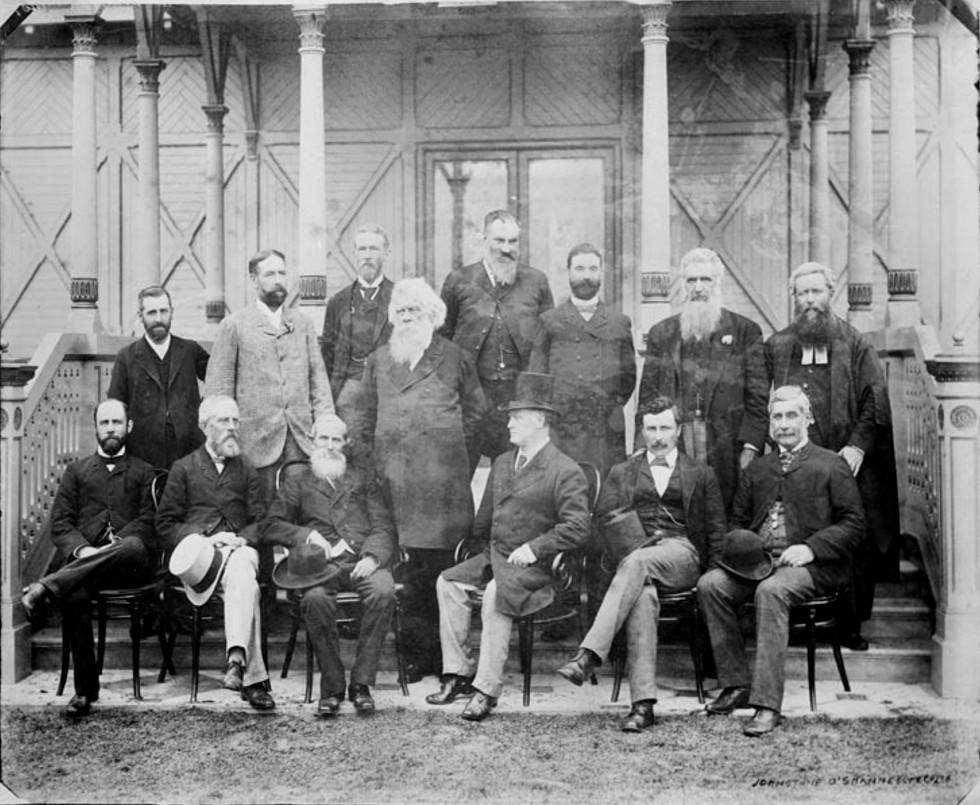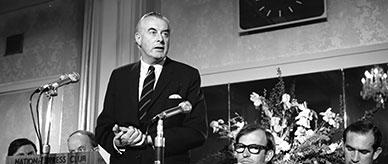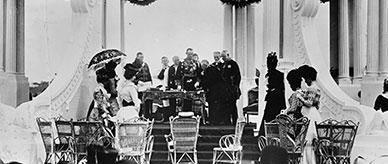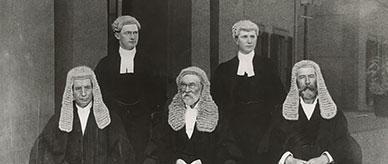


About this record
This photograph shows colonial delegates to the Australasian Federation Conference held in 1890.
Back row, left to right: A Inglis Clark (Tasmania); Captain Russell (New Zealand); Sir Samuel Griffith (Queensland); Sir Henry Parkes (New South Wales); T Playford (South Australia); Alfred Deakin (Victoria); DS Bird (Tasmania); GH Jenkins (conference secretary).
Seated, left to right: W McMillan (New South Wales); John Hall (New Zealand); JM Macrossan (Queensland); Duncan Gillies (Victoria); John Cockburn (South Australia); James Lee Steere (Western Australia).
Pathway to Federation: The Australasian Federation Conference
The Australasian Federation Conference, held in Melbourne in 1890, was a significant event in the lead-up to Federation.
The conference was attended by delegates from the 6 Australian colonies and the colony of New Zealand. Described at the time as 'representative public men', they included New South Wales premier and federation advocate Henry Parkes, who put forward the motion that the colonies ought to unite.
The conference was not the first intercolonial gathering to debate a union of the Australian colonies. The most significant among the early meetings was the Australasian Intercolonial Conference held in 1883. It resulted in the Federal Council of Australasia, which met in 1886, 1888 and 1889. However, the council was rendered ineffectual by the non-participation of New South Wales, New Zealand and, until 1889, South Australia.
The Australasian Federation Conference was triggered by two important events in 1889.
The first was a report on the defence of the Australian colonies prepared by James Bevan Edwards. It found that the colonial forces would be unable to defend Australia from attack. It recommended that the colonies combine for mutual defence – federating their forces, using the same weapons and establishing a military college for officers.
The second was a famous speech made by Henry Parkes in Tenterfield, New South Wales, on 25 October, in which he argued for Federation. Known as the Tenterfield Oration, it was the first time anyone had directly put the case for Federation to members of the public, rather than to politicians.
The resulting Australasian Federation Conference saw vigorous debate between delegates. Ultimately, they agreed that the interests of the Australian colonies would be best promoted by uniting as one nation under the British Crown. The delegates agreed to meet to draw up a draft Constitution the following year.
The question was no longer whether Federation should occur, but how.
You can learn more about the history of the Australian Constitution on a virtual tour of our exhibition Voices / Dhuniai: Federation, democracy and the Constitution.
Acknowledgments
Learning resource text © Education Services Australia Limited and the National Archives of Australia 2010.
Related themes
Need help with your research?
Learn how to interpret primary sources, use our collection and more.



